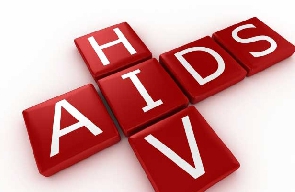Despite the rapid scale-up of antiretroviral therapy (ART) since 2000, HIV/AIDS is still the most common cause of death in sub-Saharan Africa, according to data from the Global Burden of Disease. In Ghana, GBD data show that HIV/AIDS was responsible for 13,878 deaths in 2017.
A new scientific paper reveals striking variation in HIV prevalence at provincial and district levels. The paper, published in Nature, provides precise geographic estimates of HIV prevalence and numbers of people living with HIV to identify priority areas for health care support to reduce the burden of HIV.
“Changing the trajectory of HIV/AIDS in Africa requires that we continue to seek better ways to know the epidemic. This paper will support policymakers and health care providers in locating hotspots of HIV/AIDS at national and subnational levels, and will help guide smart investment of scarce resources for diagnosis, prevention, and treatment,” said Dr. John Nkengasong, director of the Africa Centers for Disease Control and Prevention (Africa CDC).
The study, conducted at the Institute for Health Metrics and Evaluation (IHME) at the University of Washington, is the first to map HIV prevalence among adults ages 15-49 comprehensively at a granular, subnational level for all 47 countries in sub-Saharan Africa. The results show high variation in prevalence and changes in prevalence over time within countries.
In 2017, the highest estimated HIV prevalence at the second administrative level in Ghana was 2.4% in Lower Manya Krobo District. The lowest prevalence was 0.6% in Bunkpurugu-Yonyoo District. The study found that the largest number of people aged 15-49 living with HIV (PLHIV) reside in Accra Metropolis District.
Since 2015, the World Health Organization has recommended ART for all people living with HIV, because early treatment enables them to live longer and healthier lives and reduces the potential for transmitting the virus.
Despite the rapid scale-up of ART, 34% of people in East and Southern Africa and 60% of people in West and Central Africa living with HIV are not currently on treatment, according to UNICEF.
Growing population size and continued high incidence of HIV infection, combined with increased life expectancy among people living with HIV (PLHIV), has led to an increase in PLHIV in sub-Saharan Africa: between 2000 and 2017, the number of people aged 15-49 years living with HIV in sub-Saharan Africa increased by 3 million, even as HIV prevalence declined.
“Global funding for HIV/AIDS has declined since 2013, but our research shows the substantial burden that still exists and reveals where geographically targeted interventions might make a big difference. Our goal is to provide robust data that can be used to help prevent future infections and ensure appropriate care for people living with HIV,” said IHME’s Dr. Laura Dwyer-Lindgren, lead author and Assistant Professor of Health Metrics Sciences.
Key findings from the study include:
- Most countries (36 of 47) had a more than two-fold difference in prevalence between second-level administrative subdivisions in 2017 (Figure 1). In one-fourth of countries, the largest difference was more than five-fold.
- While the country-level analysis shows a clear divide between countries in Southern sub-Saharan Africa and the rest of the continent, subnational-level analysis reveals areas outside Southern sub-Saharan Africa with high HIV prevalence, including parts of Kenya, Malawi, Uganda, and Tanzania where prevalence exceeded 10% in 2017 (Figure 1c).
- Both the direction and rate of change in HIV prevalence from 2000 to 2017 varied between and within countries, highlighting the changing landscape and underscoring the need for current, local data.
- The spatial concentration of people living with HIV (PLHIV) was highly variable. While a large number of PLHIV were concentrated in a small number of areas, an equally large number were widely distributed in areas with lower spatial concentrations of PLHIV.
The Bill & Melinda Gates Foundation funded the study, part of a five-year grant that enables IHME researchers and collaborators globally to map a range of health metrics at a fine local resolution. The research is part of the Local Burden of Disease project at IHME led by Dr. Simon I. Hay, Director of Geospatial Science at IHME and Professor of Health Metrics Sciences at the University of Washington.
The estimates highlight transnational trends, suggesting that international collaboration could help address persistent high prevalence in some areas.
“The work done at IHME and on the Local Burden of Disease team is supported by a large network of collaborators, who play a critical role in the analysis of data and the use of published data in policy. We are always seeking to build our collaborative network and are very grateful to all who contributed to this study,” said Dr. Hay.
The paper builds on many previously published analyses, incorporating a broad array of data sources and presenting the results in a publicly accessible web-based visualization tool.
Health News of Wednesday, 15 May 2019
Source: Ezinu Adogla Deteah













